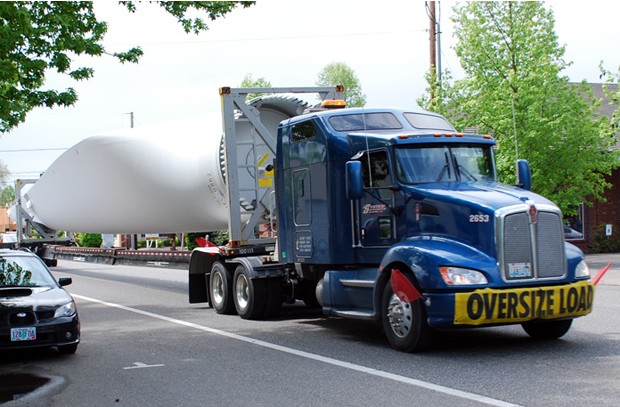From the heart of the city to the Port of Vancouver, the Vancouver City Council is expected to start tackling a series of recommendations to improve transportation on the city’s west side.
The recommendations are part of the recently published Westside Mobility Strategy – Final Report. Recommendations range from Main Street corridor improvements to help achieve economic development objectives, to optimizing the Mill Plain/I-5 Interchange for improved freight travel.
Patrick Sweeney, principal transportation planner for the city of Vancouver, and the study’s project manager, called the report “the first comprehensive transportation study for the entire west side.”
“There have been targeted planning studies and analyses done for Vancouver central, which is mainly downtown, Fruit Valley… and in other parts of the city we have sub-area plans – section 30, Central Park, Fourth Plain and areas like that. But this is the first time that we’ve looked at the mobility [needs] of all industry and eight different neighborhoods … now and in the future,” said Sweeney.
According to Sweeney, the Westside Mobility Strategy took on a two-fold approach: Phase 1 of the planning process uncovered insights related to how people and goods move across the west side neighborhoods – both now and 20 years into the future. Phase 2 identified and tested the effectiveness of improvements to the transportation network.
The study also identified a number of growth-related transportation challenges, including the fact that the city’s neighborhoods were developed in an era when most people were getting around via horseback, walking, bicycling and streetcar – not the automobile. Another challenge is that current and projected residential growth continues to add pressure to the network. In Fruit Valley, industrial growth at the Port of Vancouver is steadily increasing freight traffic.
All told, the study culminated in eight goals, each with one to six recommendations.
“The recommendations that we came up with are well-grounded in the analysis and findings based on our research and data collection, and are tailored to the context of the west side of Vancouver,” said Sweeney, adding that the study looks at other cities for ideas and best practices when it comes to different types of transportation, like managing vehicle traffic, managing freight, pedestrian access and accessibility, and bike infrastructure.
Short-term implementation prospects include Lincoln Ave. Sidewalks, 39th Street freight prohibition (the city council is expected to discuss this next week), along with a series of other opportunities.
The study’s goals could be funded internally through city transportation, transportation capital and street operating funds, and external forms of funding could come from partners like WSDOT, RTC, and private foundation grant programs.
“This is a strategy document and city council will be voting to approve it and adopt the strategy as a guiding document for future city planning and infrastructure decision types of projects,” said Sweeney. “This is a long-term look into the future for how to improve mobility for all modes across the west side.”
View the Westside Mobility Strategy – Final Report at www.cityofvancouver.us/ced/page/westside-mobility-strategy.







